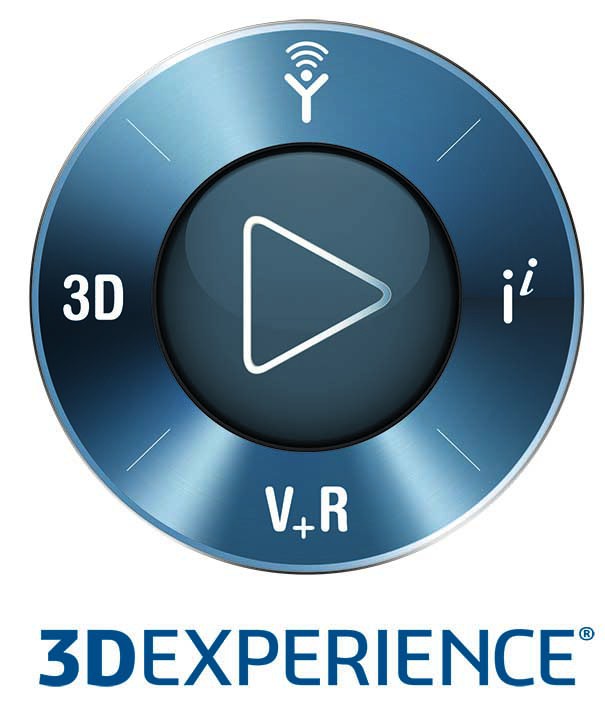
3DEXPERIENCE: Enabling innovation in the Age of IoT
The Business Value of the Internet of Things
The Internet of Things (IoT) is quickly becoming part of our everyday lives, with its presence growing ever more pervasive in nearly everything we use. From mobile devices and computers to kitchen appliances and entertainment devices like televisions or audio speakers, more and more companies are joining the race to create products that are connected to the web. This burgeoning industry has opened up a whole host of avenues for businesses to innovate.
According to market research firm International Data Corporation (IDC), Asia Pacific is the frontline region for IoT growth, with the number of “things” connected expected to nearly triple from 3.1 billion to 8.6 billion by 2020. This exponential growth will put the industry’s value at an estimated US$583 billion, the firm says. Contributing to the upward trend is the fact that 26 percent of developers and companies in the region are expected to be working on IoT-related projects, said Dr Rishi Bhatnagar, Global Head of Digital Enterprise Services at Tech Mahindra, in an interview with eGov Innovation. This figure puts APAC ahead of North America (23 percent), South America (22 percent), and the EMEA region (17 percent).
This vast connectivity has made its way into numerous discreet manufacturing industries, where ideas manifest into physical things to be bought and used and adopted into the lives of many.
It’s also immensely cost-effective – according to a McKinsey report, the use of IoT in manufacturing has the potential to generate US$3.7 trillion in savings per year by 2025. For companies that wish to keep up in an era dubbed the Fourth Industrial Revolution, speed is of the essence. The biggest driver for industrial IoT is speed, agility, and productivity gains – this means businesses need to be well-organized and equipped with the right methods and tools to keep up with competition.
But consumers today are looking for more than just products and services – they are also looking for experiences. A mediocre user experience with a smart product, no matter how well-connected it is, simply would not do, and could mean all the difference between making it or breaking it.
High-tech at the forefront
At the epicentre of this value engine is the high-tech industry. From providers of security, control, and instrumentation equipment to manufacturers of computing and communication equipment, semiconductors, and consumer electronics, the high-tech industry is the backbone of the IoT revolution that is reshaping all industries.

Experience thinking
To capitalize on this opportunity, high-tech companies will attribute their success in large measure to placing the customer, and the value delivered to that customer, at the center of their IoT initiatives.
Whether they make a finished product or product components, the connected and dynamic nature of the IoT requires thinking through the dynamics of the ultimate customer’s full experience, and investigating how a device can leverage the capabilities of other devices to enhance that experience.
This is not an easy challenge: designing, producing, and supporting goods and services in the age of IoT is complex, but there are powerful resources available to help master this complexity, including social ideation, digital design, and simulation, model-based systems engineering, and open collaboration across disciplinary and organizational divides.
- Social Ideation

Image via Dassault Systèmes
Social Ideation tools and methods can help businesses make the transition from things to customer-centered experiences. First by enabling them to tap into big data insights from diverse internal and external sources during ideation. The social collaboration tools then foster engaging cross-discipline experts and even the customer in the ideation process. After sale, using deep data coming from the products-in-use enables companies to harness real-time contextual and behavioural feedback. This facilitates supporting personalized service and to continually enhance the customer experience.
- Design & Simulation
Both during ideation and development, advanced 3D-tools for digital design, modelling and simulation enable companies to better imagine, anticipate and shape the behaviour of products and the nature and quality of the customer experience.
Before and during production, tools for the “Digital Factory” enable design and optimization of production systems, and deliver real-time visibility and control across global manufacturing and supply operations, with the digital model guiding resources and activities.
The digital model of record becomes even more important in evolving products even after they are delivered. For the IoT, conventional physical products become in essence “delivery vehicles,” or conduits, for ever-evolving experiences. This transformation is evident – as Tesla, Nest and others have shown – as we see new or upgraded products increasingly arriving in customers’ homes or factories virtually, in the form of remote software updates to products they already own.
There is no doubt however, that blending products, services, software, content, technology and data into an experience within the multidirectional hyper-connected world of the IoT requires going beyond traditional digital design.
- Systems Engineering
Systems engineering is a discipline that seeks to ensure that every subsystem in a product or project supports and enhances every other subsystem to produce optimal results. In the IoT context, this means attending to not only the interfaces between subsystems, but between systems and the external environment. An example is the chain from chips to SoCs (systems-on-chip) to drive assistance control systems to trucks to roadway traffic management.
As software increasingly gives products a longevity and capacity for evolution that hasn’t existed before, one needs moreover to keep in mind that the systems being developed now are based on assumptions that may not hold true over an elongated lifecycle. This is where model-based systems engineering (MBSE) comes in. MBSE captures a behavioural design in an intelligent model instead of a series of static documents. This model allows a carry-forward of lessons learned and supports continual simulation and model enhancement as conditions change.

Image courtesy of Dassault Systèmes
- Internal and External Collaboration
Strategies for addressing the dependencies and complexities at the core of MBSE require a collaborative, interdisciplinary approach to designing, realizing and managing complex systems that interact to produce behaviour generated beyond any of the individual elements of the system. For MBSE and cross disciplines collaboration, silos have to be broken and interdisciplinary teams have to collaborate seamlessly to make IoT strategies work.
3DEXPERIENCE for High-Tech provides a cloud-based collaborative framework for enabling this transformation. At the highest level of business strategy it delivers optimal customer experiences by letting technical and scientific experts, and sales and marketing professionals work in perfect synchrony both internally and as partners, to produce optimal business results at minimal risk.
Find out more about Dassault Systemes here.
READ MORE
- Ethical AI: The renewed importance of safeguarding data and customer privacy in Generative AI applications
- How Japan balances AI-driven opportunities with cybersecurity needs
- Deploying SASE: Benchmarking your approach
- Insurance everywhere all at once: the digital transformation of the APAC insurance industry
- Google parent Alphabet eyes HubSpot: A potential acquisition shaping the future of CRM
